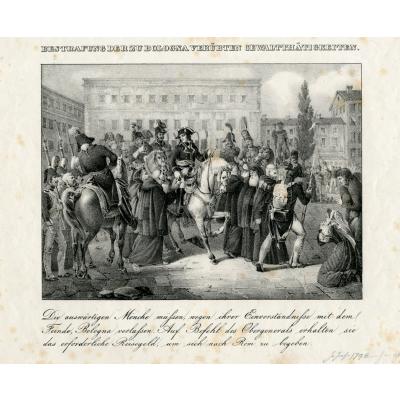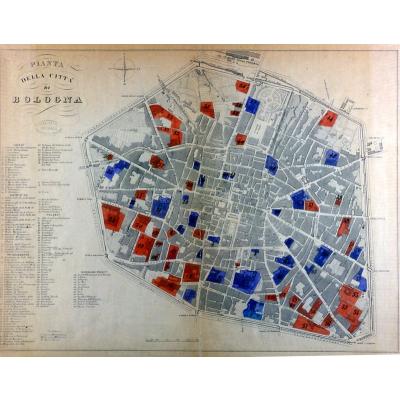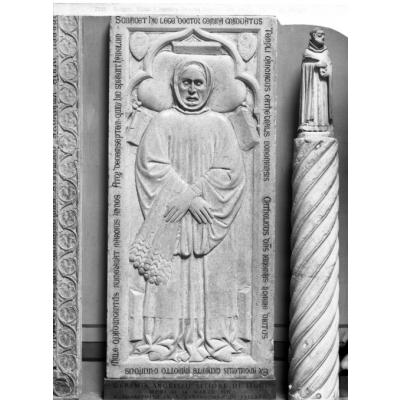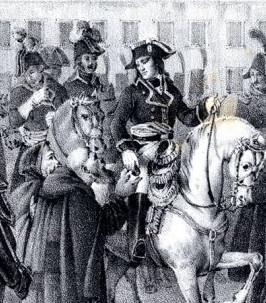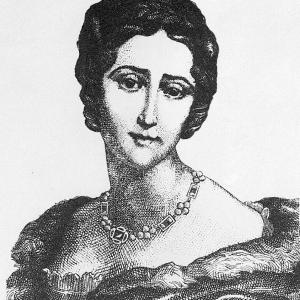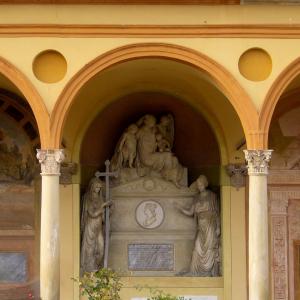Schede
From half of XVIII century, in all Europe, a cultural mentality which supported the suppression of religious congregations and the appropriation of their properties was getting stronger and stronger: besides, the French Revolution, by exasperating the laicism of the philosophes, considered men of religion as enemies. In fact they not only were monarchic sustainers, but the dress they wore was symbol of inequality, that is, a privilege that had to be abolished; being members of a community could not but be seen in contrast with a State that only recognized individual rights, abolished corporations and widely limited association right; the religious vows that men of religion professed were considered as a violation of personal rights.
On the other hand, behind the suppression of religious orders, there were also matters of economic nature, (grown/developped) during the previous decades, that the Revolution brought to a breaking point: the policy of the enlightened sovereigns and the new duties assigned to the State required a bigger financial supply and most (tensions) initiated by the crisis of the ancien régime finally fell upon the consistency and the economic and social importance of the Church’s goods. Bologna couldn’t let these events pass by, being a city that, with a few more than 70.000 inhabitants, counted seventy convents and monasters, often endowed of secular goods, with one thousand friars and monks, the same number of priests and more than 600 professed nuns. Then, on December 27, 1796, six months after general Bonaparte entered Bologna, the city Senate ordered to suppress all the monasters having less than 15 Bolognese people; moreover, every religious order might have in a city only one monaster; finally, the Senate was given the faculty of suppress or reconstitute the nunneries, which were also obliged to put on (sale/auction) their goods. The Bolognese men of religion who lived in the suppressed monasters were given a boarding house (what’s more, paid with ecclesiastic goods), while the “foreigners” were simply banned from the city. According to this kind of legislation between 1796 and 1799 more than 400 religious institutes were suppressed. On June 8, 1805, another decreet suppressed the convents having less than 24 people, imposing an established number of convents and men of religion all over the Kingdom’s territory: in the cities, 12 convents remained open, often forced to give hospitality to other religious communities. Finally, with the decreet of April 25, 1810, Napoleon suppressed all the “stabilimenti, corporazioni, congregazioni, communità ed associazioni ecclesiastiche di qualunque natura e denominazione” (“plants, corporations, congregations, communities and ecclesiastic associations of every type and denomination”) except the charity nuns and a few other congregations with educative scopes and forbade to anyone “di vestir l’abito di veruno ordine religioso” (“to wear any kind of religious dress”). The action against monasters and convents wasn’t kind even toward the city parishes: with the decreet of June 22, 1805, in fact their number was reduced from more than 40 to 18.
More than half of the confiscated estates was sold to privates to reinforce public finance; yet, from this point of view, the operation nearly ended without success: the purchases weren’t so many, the selling prices were inevitably low for the sudden high quantity of supply towards demand and, in addition, the buyers could get noticeable postponements in payments. The ecclesiastic suppressions, in the end, were benefic exclusively for some privates, who accumulated high quantities of resources. The rest was (destined) to host public buildings such as jails, hospitals, (assistance) institute, barracks; in the area of the convent of S. Gerolamo it was created the city Cemetery, while the rooms of the convent of S. Ignazio were useful for the Fine Arts Academy and the Picture Gallery. The Papal states restoration didn’t bring about a return to the conditions preceding the revolution. Several of the main religious orders were reconstituted and different churches that had been (sconsacrate) were restored and reopened to the people, but at the same time, it was established the legality of the properties acquired in the Napoleonic period. In 1859, at the end of Papal government, the ecclesiastic legislation of Sardinia Kingdom also extended to Emilia. A few years after, with the law of July 7, 1866, all religious orders were suppressed and their real estates were sent to local administration. In Bologna, the suppression concerned 18 convents but, since the third Independence War was taking place and most of the (locals) were at the army’s disposition, the provincial and town administrations, in order to get the estates designed to them, had to carry out intricate negotiations with the military government property, obtaining, in the end, results not as satisfactory as they expected. Although law reserved a particular treatment for religious buildings, even when these were hit, though in a different manner: San Francesco’s church, for instance, were adapted to military purpose for twenty years, while the portico in front of S. Domenico’s church, was knocked down as a disdain toward the “frati dell’Inquisizione” (“Inquisition friars”). Only during the following decades, a succession of restorations would have brought those buildings to their ancient beauty.

